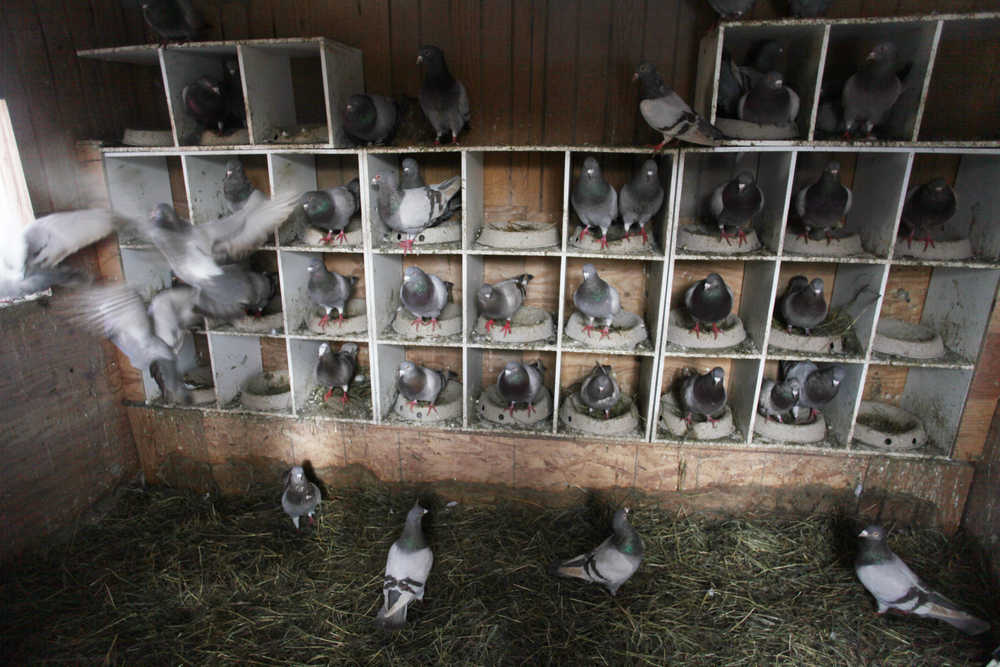The Kenai Peninsula has one of the fastest growing agricultural industries in the state.
Whether measuring expansion through rising direct to consumer sales, acreage acquirements or crop variety, local farmers are making major strides in the sector.
“If it wasn’t before, the western Kenai Peninsula is rapidly becoming an agricultural center,” said Heidi Chay, district manager for the Kenai Soil and Water Conservation District. “The Kenai Peninsula has outpaced the state as a whole.”
Chay said while the peninsula accounts for a small portion of Alaska’s producing farmland, 30 percent of the state’s peony farms and 34 percent of farms selling food director to consumers are located in the region.
The number of farms grew by 65 percent from 2002 to 2012, according to the Kenai Peninsula Economic Development Distrist. A farm is anything that makes more than $1,000 in annual sales off of argricultural products, according to the economic development district.
Flowers are the Kenai Peninsula’s most valuable crop, followed by hay, Chay said. Peonies and vegetables are the fastest-growing sectors, she said.
Chay cited the most recent data from the 2012 Census of Agriculture, which shows nursery, greenhouse and flower sales were valued at more than $1 million, followed by hay, livestock and vegetables that year.
“All indicators point to continued growth in production since 2012, with more high tunnels and new peony farms coming on-line each year, along with new value-added products like wine, jam, jelly and preserved vegetables,” Chay said.
Growers are selling their food at Farmers markets, through CSA subscriptions, or Community Supported Agriculture, to local restaurants and stores and soon through an Online Food Hub developed by various collaborating producers and organizations.
“Kenai Soil & Water Conservation District has surveyed farmers market customers and producers, so we know, for instance, that shoppers at the Tuesday farmers market at the Food Bank increased nearly 20 percent from 2014 to 2015,” Chay said. “The majority of market farmers we surveyed about the 2015 season had increased sales and were making plans to further expand their businesses.”
At the Central Kenai Peninsula Farmers Market, the area’s oldest, where Chay spent time polling sellers and buyers last summer, several farmers reported record sales, she said. Ridgeway Farms in Soldotna reported record-breaking CSAs and grew more than 14,500 pounds of vegetables.
USDA Alaska Director Danny Consenstein said the Kenai Peninsula is also beginning to sell a number of value-added products, which are raw crops turned into items like jams or wine.
The consumer base is growing as well, Consenstein said. More and more people are choosing to buy locally. If there is more demand then farmers can continue to grow their operations because the revenue they will need to expand will be there, he said.
One of the biggest challenges to farming in Alaska is the lack of existing infrastructure, Consenstein said. Anything agriculture related must be shipped in from Outside, which can be pricey, he said.
Consenstein said in regards to agriculture Alaska is somewhat of a young industry. There are many small farms and few centralized locations to sell product so it is taking work to develop a steady, reliable market.
“People are really kind of pioneering agriculture here and every situation is unique,” Casey Matney, who holds the Horticulture Agent position with the Kenai Peninsula’s University of Alaska Fairbanks Cooperative Extension Service.
Farmers face many unique challenges, and have much to adapt to in order to be successful in the state, Matney said.
Growers have a lot to overcome including cold soils that need a lot of build up before the land is arable, short seasons and a rough climate, Matney said. Farmers have to evolve practices to what works well. They utilize high tunnels, greenhouses, hydroponic set ups, and have looked toward other similar climates such as those in Europe or Canada to select their crops from. Some locals have even mastered growing fruit trees. In the future, as the global warming trends continue, growers will have to adapt even more in terms of finding more ways to irrigate their farms, he said.
“And so everything is just kind of growing,” Matney said.
Reach Kelly Sullivan at kelly.sullivan@peninsulaclarion.com.

